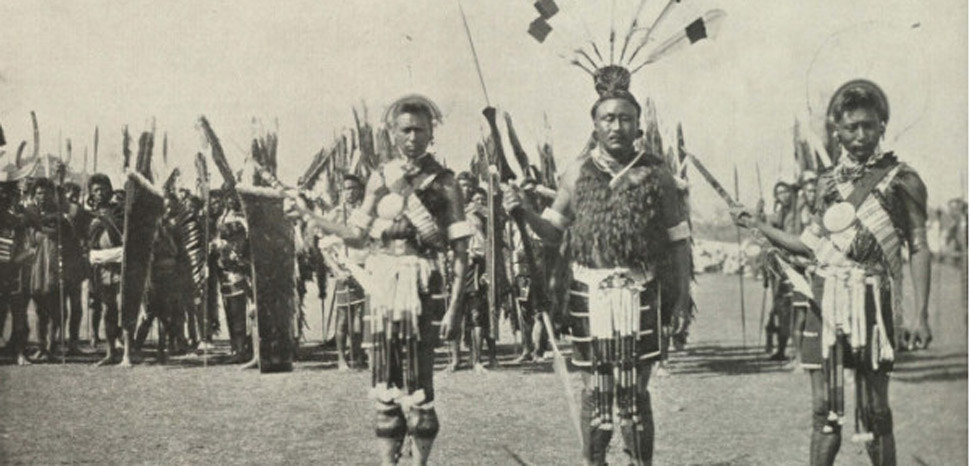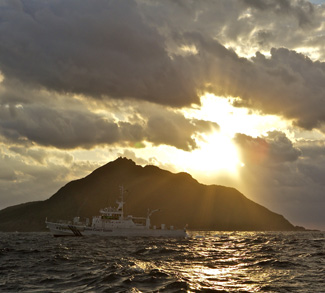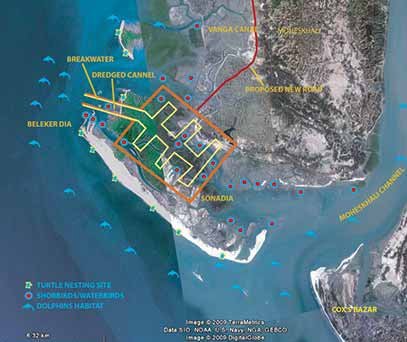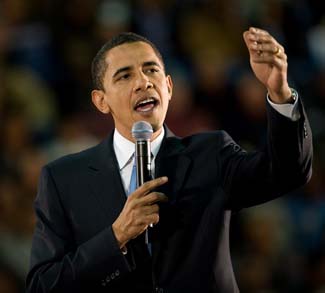The Indo-Naga conflict is a case of aggression. By addressing the nub of conflict, the government of India (GoI) could reap rewards for its reputation and national dignity as a large democratic country. But the GoI has never done this; instead, it tries to internalize the Indo-Naga conflict. Therefore, the conflict remains to this day.
The conflict is a case of aggression because it didn’t arise from the Nagas invading India and Burma, or demanding an independent or autonomous state from them. Rather, India and Burma sent their armies to independent Nagaland in 1954, after they had been emancipated from the yoke of British colonization.
The Nagas have ample evidence to show this is a case of aggression:
Firstly, the Nagas have no common history with the Indians and Burmans, and Nagaland territory has no connection with their countries. Nagaland has never been a part of either of their countries, not by conquest nor consent. Before the advent of the British, the Nagas never knew the Indians and neither did India know the Nagas. The first time the Nagas came to know the Indians was when the British brought their Indian mercenaries to Nagaland in 1832. After that, the Nagas and British engaged in intermittent warfare lasting for nearly 48 years as the Nagas relentlessly defended their sovereignty. The last war was fought at Khonoma village on November 22, 1879.
Thereafter, a verbal peace agreement was concluded on March 27, 1880 between the two people (British and Nagas). The British proposed to have a written agreement but the Nagas refused it, thus the Nagas have no treaty and agreement with the British to have surrendered their sovereignty to the British suzerainty. Yet the British took advantage of the peace, and administered one-fourth of Naga territory up to 1947; the other three-fourth were Free Nagas up until the British departed from India and Burma, including the eastern part of Nagaland.
Secondly, The Naga Club, which was formed on 7 January 1918, submitted a memorandum to the British Statutory Commission, known as Simon Commission, stating: without the knowledge of the Naga people, Nagaland should not be handed over to other countries, but leave us alone to determine for ourselves, as in ancient times.
Thirdly, After World War II, the Naga Club leaders renamed the Naga Club the Naga National Council (NNC). Since then, the NNC firmly stood to safeguard the sovereignty of Nagaland in those days of a changing world. And more memorandums had been submitted to the British government again on behalf of the NNC. Out of them, two memorandums are quoted herewith: On 9 April 1946 to the British Cabinet Commission, Camp New Delhi: “The Naga future would not be bound by arbitrary decision of the British government. And any recommendation without consultation would not be accepted.” On 29 March 1947, to British Prime Minister Sir Clement Attlee: “The Nagas could not be thrown into the sea of Indian politics. We desire to be left alone in the event of the British withdrawal from India.” A copy of the Memorandum of 1929 was also included, because he was a member of the Simon Commission who visited Kohima, Nagaland in 1929.
In 1947, the sub-committee of the Constituent Assembly of the Government of India, under the chairmanship of Shri Gopinath Bordoloi, visited Kohima, Nagaland. Naga political affairs were discussed with the NNC for three days, from May 19-21. The sub-committee offered an autonomous state to the Nagas, but the Nagas rejected it, maintaining that the Nagas are an independent nation and will remain independent as in ancient times. Also, the Nagas were not involved in the Panglong agreement, which was signed by the Union of Burma on 12 February 1947.
Fourthly, The Naga national leaders had an understanding with Indian and Burmese national leaders on the Naga national issue, and declared their age-old independence to the outside world on 14 August 1947, before India and Burma officially became independent. On the same day, the declaration was cabled to the UN and the government Great Britain; it was also sent to the Indian government. The declaration of independence was reaffirmed by 99.99% of the Naga people when the NNC conducted a voluntary plebiscite on May 16, 1951. Also, with this plebiscite, the Naga people had given their immutable mandate to the NNC to safeguard and speak for the future of Nagaland.
But after the assassination of Indian National Father Mahatma Gandhi and Gen. Aung San, Father of the Burmese nation, their successors, Shri Jawaharlal Nehru, prime minister of India, and U Nu, prime minister of Burma, divided the Naga nation without the knowledge of the Naga people in 1953. Hence, they sent their armed forces into independent Nagaland in 1954 in an attempt to invade. The war with the Nagas started from then on as the Nagas resisted them in defense of their country.
The war with India and Burma is, therefore, a case of aggression, but not a case of secession or demanding an autonomous state. If they regard and respect the will of Naga people, the Nagas would not have had to fight a war.
After initiating the conflict, the government of India is now attempting to internalize what is clearly a case of aggression:
For one, India and Burma claim that they have inherited Nagaland from British colonial rule. This is totally a false claim. The British government cannot hand Nagaland over to India and Burma without the consent and knowledge of Naga people, and neither can they disregard the memorandums submitted to before India and Burma were granted independence, as highlighted above. In addition, in the Atlantic Charter Clause (2), it was written: “No territory should be transferred to another country without consent of the concerned people. (3) The will of the people, the sovereignty right and self-determination should be respected.” The Charter was solemnly signed by American President Franklin D. Roosevelt and Prime Minister Sir Winston Churchill. Thus, the British government had no right to hand Nagaland over to India and Burma in breach of this Charter.
Two, The government of India is trying to internalize the Indo-Naga conflict by offering an autonomy state to the Nagas. In 1957, some educated Nagas were made to form a Naga People’s Convention (NPC), and with this NPC, the GoI signed a 16-point agreement on June 27, 1960, establishing a puppet Indian state in Nagaland on December 1, 1963. This was done in an attempt to internalize the aggression case in order to cover up her naked aggression on Nagaland and the horrendous atrocities committed by her armed forces on Naga civilians.
Statehood under the Indian Union was rejected by the NNC, which continued to defend the sovereignty of Nagaland. At that time, in June 12, 1960, Dr. A.Z. Phizo, the Naga national leader, landed in London to procure arms and ammunition from abroad to defend the sovereignty of Nagaland.
The prime minister of India, Nehru, therefore realized that the state offered to the Nagas was not the answer of the conflict, and thus he relented and signed a ceasefire agreement with the federal government of Nagaland (FGN) on May 25, 1964. The GoI, however, proposed to use the words ‘Naga rebels’ in the document, which the FGN strongly rejected. Subsequent negotiations took three months, and when the GoI accepted the FGN’s terms, the agreement came into effect on 6 September 1964. Hence, peace talks were held at the prime ministerial level, as two nations – in theory. But the GoI unilaterally abrogated the agreement on 31 August 1972, and re-escalated heavy military scorched-earth operations in Nagaland once again to put pressure on the Nagas to accept the constitution of India at gunpoint. To fulfil the objective, the Indian Army was heavily deployed to Nagaland in 1975.
The outcome of the scorched-earth operation was the signing of the Shillong Accord. As pre-planned to have the Nagas surrender politically, Naga leaders were made to sign the Accord on 11 November 1975 to accept the constitution of India under duress. But the agreement is an invalid document, because the GoI doesn’t allow for the recognition of the NNC or FGN, meaning their representatives did not sign the document. Thus, the name of NNC/FGN, Naga, and Nagaland were omitted from the agreement, and no mention was made of the rank and designation of the signatories. As the accord faced instant death due to its invalidity and non-ratification by both governments (GoI & FGN), the GoI never insisted the Nagas hold talks based on the Shillong Accord framework. The NNC/FGN firmly stood up to defend the sovereignty of Nagaland after the Shillong Accord.
The GoI thus attempted to internalize the conflict once again. In those days (1977-1979), the Naga national workers in Eastern Nagaland (under Burma’s military occupation) have two divisions (within the NNC/FGN) – those who supported the NNC and Phizo’s leadership (democracy), the author included, and those who supported Muivah’s leadership and his socialism. The GoI, knowing Thuingaleng Muivah’s lust for power (the then General Secretary of NNC), backed his design to overthrow the existing Naga national institution NNC and Phizo’s leadership. As the outcome, Th. Muivah and Isak Chishi Swu (the then Finance Minister of FGN) defected from the NNC/FGN and formed the National Socialist Council of Nagaland (NSCN) on January 31, 1980. Before they formed the NSCN, they eliminated all of NNC/FGN top leaders and top Naga Army officers in Eastern Nagaland in the last part of 1979 owing to their opposition of Muivah’s socialism. (I was in an Indian Jail since August 1979 and escaped the killings). After they were killed, false charges were given on their death bodies, that they supported the Shillong Accord and were killed because they (Muiva-Isak) feared that if the truth was revealed they would be condemned by the people. But before they were shot to death, their voices can attest to the fact that they rejected Muivah’s socialism and were murdered for it. They had no problem with Muivah regarding the Shillong Accord. Since the formation of the NSCN, it has systematically fought against the NNC and FGN. In the end, more than four thousand innocent Nagas were killed for going against the NSCN leadership.
After the formation of NSCN, Muivah and Isak completely deviated from the Naga national stand as a sovereign and independent nation and reversed their stand to demand an autonomous state from India following the Suisa proposal. Yet in April 1988, when Eno Khaplang rejected Suisa’s proposal, the NSCN split into two factions known as NSCN-IM (Isak-Muivah) and NSCN-K (Khaplang). More killings among the Nagas took place after the NSCN split into two factions.
After the so-called ceasefire agreement signed between the GoI and NSCN-IM in August 1997, the GoI helped to build the NSCN-IM as a strong-armed group among the Nagas. Although the group is demanding autonomous statehood and shared sovereignty with India, it helps India make the Indo-Naga conflict appear as an internal affair to the outside world. The GoI also provides Z+ full security to NSCN-IM top leaders and allows them to stay safely in New Delhi.
The NSCN-IM is not, therefore, defending the sovereignty of Nagaland and is not holding talks with India based on the sovereignty of Nagaland. Rather, it is demanding shared sovereignty with India, which only helps India make the Indo-Naga conflict appear as an internal affair. As the IM group is demanding autonomous statehood, its political terminology also changed from a Naga national issue to a political issue.
However, the NSCN was formed more than 30 years after the NNC originally founded the independent Naga nation, and therefore, it has no mandate or right to solve the Indo-Naga conflict. Before the NSCN was born, India granted an autonomous state (371A) to the NPC in 1960; but it didn’t produce a solution to the conflict. So even if the GoI grants another autonomous state to the NSCN-IM group, it will once again fail to stem the conflict. For the Nagas, the plebiscite of 1951 was a final solution and pledge for their future. No alien nation’s decision and solution is needed for the Nagas, but rather to recognize the sovereignty of Nagaland. Therefore, till the sovereignty of Nagaland is recognized by the world, the Nagas will continue to march ahead in one accord under the banner of Naga National Council.
W. Shapwon is the joint secretary of the Naga National Council.
The views expressed in this article are those of the author alone and do not necessarily reflect Geopoliticalmonitor.com or any institutions with which the author is associated.




